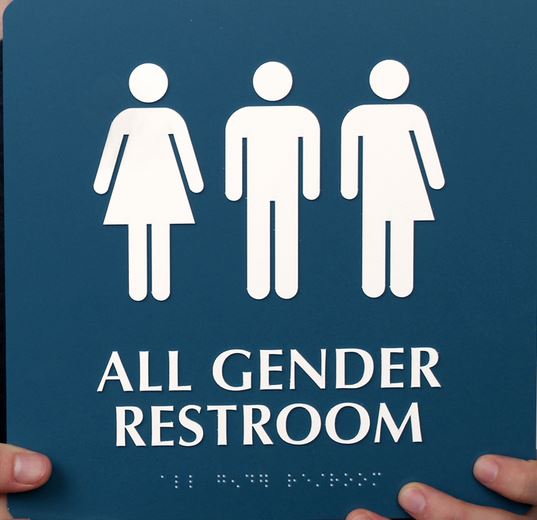Universal Washrooms: AODA Related Question from our Client re Universal Washrooms; Worth Sharing
Thank you for asking about your company’s requirement to provide a Universal Washroom particularly as you have an employee in a wheelchair who requires assistance from an Attendant. Your question is interesting in large measure because these issues are going to arise again and again in many workplaces in ON in the coming years in particular nearing 2015 when the ONTARIO BUILD CODE (OBC) Accessible Built Environment Standards (ABES) comes into full force
The Building Code for Ontario requires barrier-free washrooms to be provided in public areas of most buildings. These washrooms must be situated on a barrier-free path of travel and are subject to a number of requirements addressing turning space, doorway widths, grab bars, counter heights, signage, emergency call buttons etc. The Building Code also sets requirements related to barrier-free showers and bathtubs.
The new amendments to the OBC were passed Dec 27 2013. These came into play at one level for this year, 2014, are will be fully in play starting January 2015. The key changes relative to Barrier-Free and Universal Washrooms includes the following:
• There are requirements for power door operators at the entrance door to all barrier-free and universal washrooms
• The mounting height & location requirements for washroom accessories such as towel dispensers and hand dryers has now changed
• There is now a requirement for fold-down grab bar design options to allow for transfer space on both sides of the water closet
• There is a requirement for L-shaped grab bars in all cases. The option to provide a diagonal grab bar is now removed from the OBC.
• There is an increase in the minimum clear floor area in barrier-free washroom stalls required to allow for turning space of wheelchairs, people with mobility aids & scooters.
• There needs to now be at least one universal washroom in all buildings. For multi-storey buildings there needs to be at least one Universal Washroom for every three floors.
• Space for an adult change table will have to be provided in all Universal Washrooms.
These requirements are in place where your company is building a new building or where there are renovations planned for a floor or a building.
So the answer as to whether your company & the Building Owner/Manager is required to provide a Universal Washroom in this case is No.
Having said all of this however, at the end of the day an employee with a disability may chose to access the Ontario Human Rights Tribunal and issue a formal complaint under discrimination and lack of accommodation for their disability. This can result in the file being considered under the OHRC. This could leave your company vulnerable to a public hearing and/or damage to its business reputation.
Further, the answer regarding a Universal Washroom will also rest with your company’s internal AODA and Accessibility policies regarding accommodation for employees with a disability.
From a business ROI perspective many building owners and managers have not come to grips yet with the benefits of having Universal Washrooms in place on at least every 3rd floor of a multi-story building.
It is a good idea for Build Owners, Managers, FM, and Businesses to understand that once a Universal Washroom is in place these can then be used by Transgendered employees; employees with disabilities and the general employee population where an additional washroom is required. At the end of the day these washrooms are not built for the benefit of one or a small number of employees; rather these washrooms by design, benefit many employees, guests, clients & the public who access your space.
It is time for all businesses in Ontario to realize within the AODA & the Human Rights Code there lies ample opportunity to build environments which accommodate ALL employees, guests, customers and visitors to your building and business. It has recently been found that the fastest business growth area in the travel and hospitality industry for example is in the provision of human centered and accessible environments which accommodate all people with disabilities, with young children or the aging end user.
Businesses who have the vision and understanding of the business ROI are the ones’ who will win more business and allow their shareholders to gravitate to their successful businesses.
Jane & the AODA/Human Centred Design experts at OPC Inc


